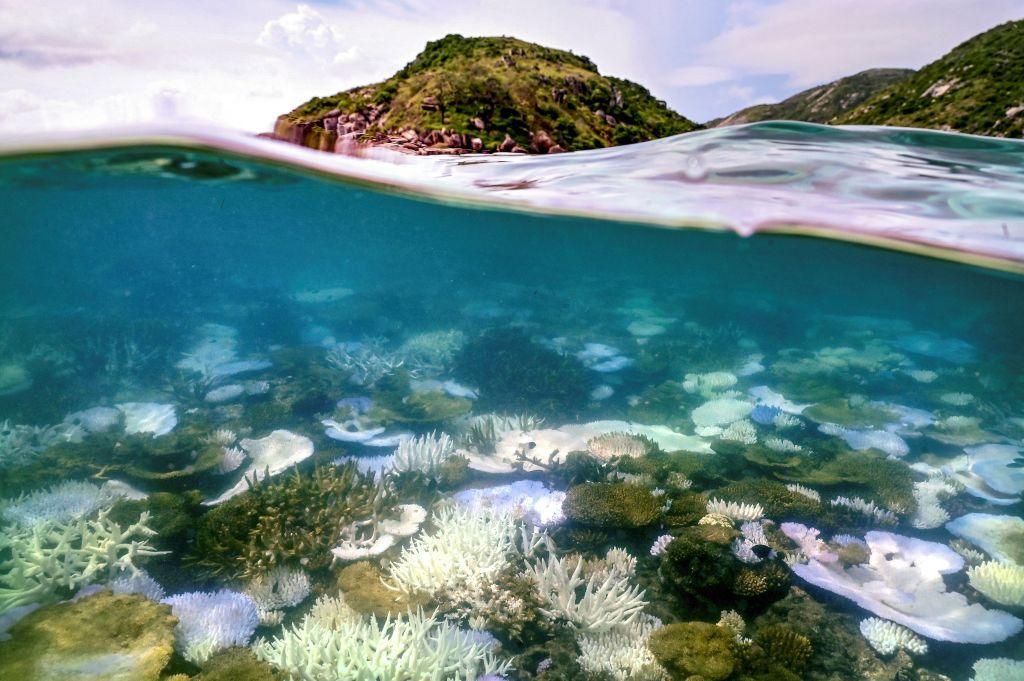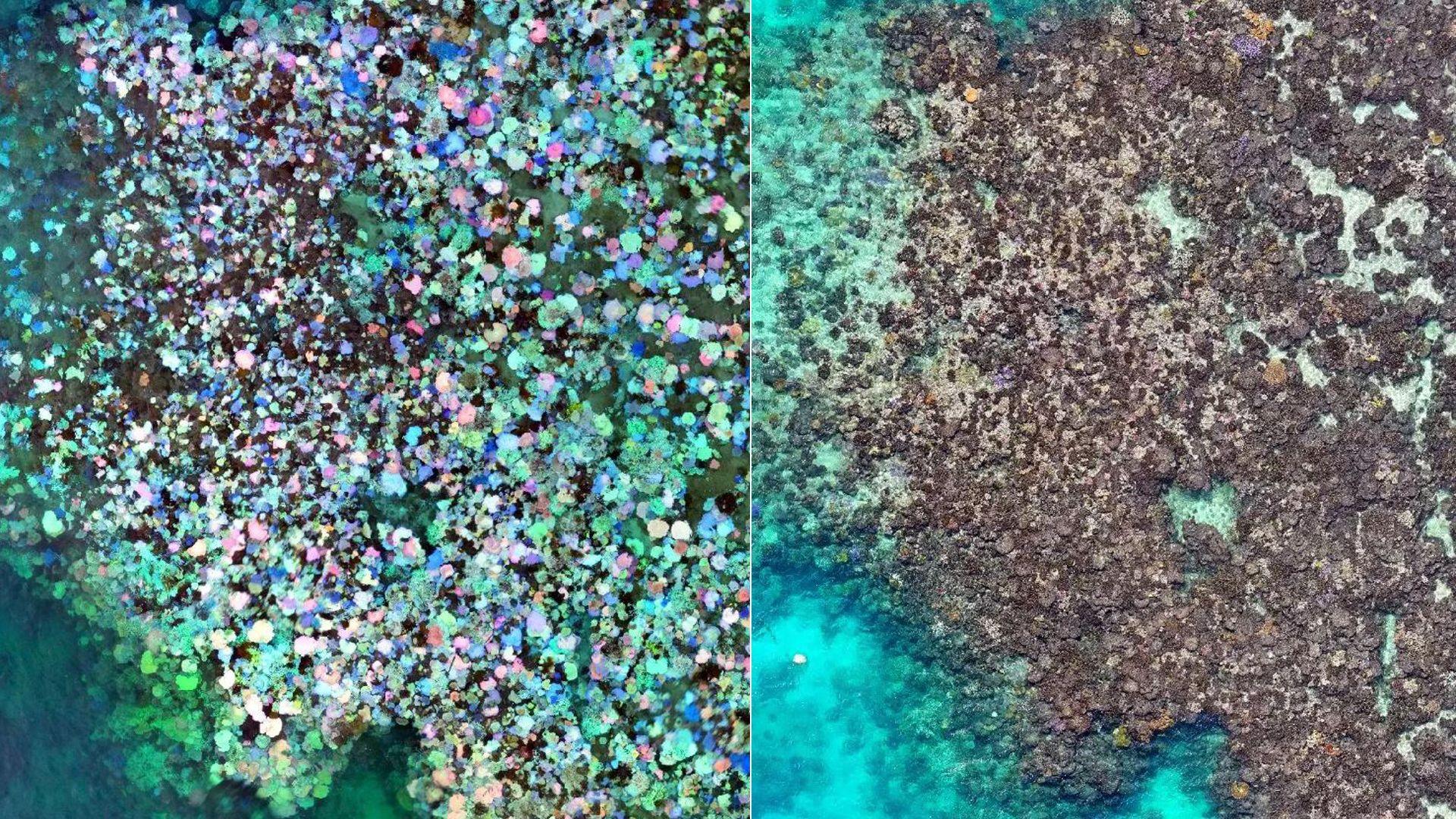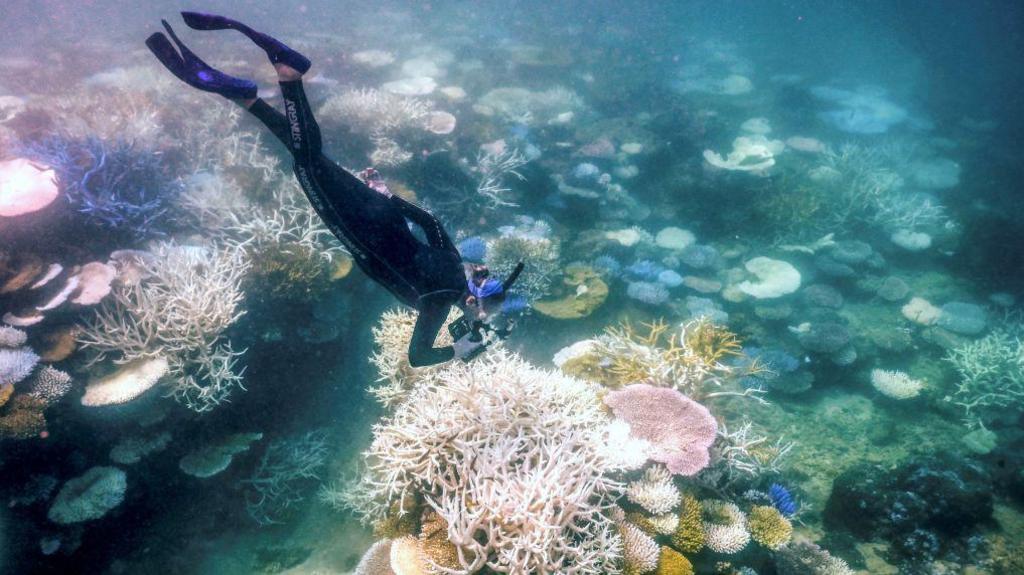One of the worst coral bleaching events ever seen at Great Barrier Reef

Scientists have said that the Great Barrier Reef in Australia is has been hit by one of the worst mass bleaching events.
- Published
At least 97% of coral on a northern part of The Great Barrier reef in Australia has died, in one of the worst coral bleaching events the reef has ever seen, according to new research.
A team of scientists made the discovery by looking at footage from a high-tech drone which was flown over the reef by Lizard Island, off the Australian north coast, to work out how coral had been affected there.
The research is thought to be the first to study into how the coral has been affected since the Australian Institute of Marine Science (AIMS) confirmed that the Great Barrier Reef had faced it's fifth mass bleaching event in eight years, earlier this year.
How climate change is turning the world's coral white
- Published16 April 2024
Our Changing Planet: How scientists are helping coral. Video, 00:02:48
- Published22 April 2024
What is coral bleaching?
How does coral become bleached?
Coral might look like a plant, but they are a kind of animal which often live in groups called colonies, and can form reefs, which is when lots of colonies join together.
Many types of coral have a special relationship with a tiny plant algae called zooxanthellae - that live in the coral.
These tiny algae produce about 90% of the food that the coral needs to grow.
Coral bleaching can be triggered when there is a change in environment, such as an increase or decrease in sea temperature, or a change in the ocean where it becomes acidic - called acidification.
An increase of just one degree Celsius for four weeks can cause bleaching. If this continues for more than eight weeks, the coral can die.
This causes the algae to get 'stressed out' and leave the coral turning it white, and with its main source of food gone, it is left very vulnerable.
Coral reefs can survive bleaching, but they need time - often decades - to recover.
What have the scientists said?

The left image, from March, shows coral at North Point Reef bleached and 'fluorescing'. The right image, taken three months later, shows the same patch of coral, now mostly dead.
In March this year George Roff from the Commonwealth Scientific and Industrial Research Organisation (CSIRO) flew over North Point Reef at Lizard Island using a drone.
This was then studied by a team of four independent scientists.
From this they saw that the coral showed signs of bleaching and fluorescing – something that happens when corals release a bright fluorescent colour into their flesh - which can make them look like they are glowing - as a type of emergency sunscreen to protect them, and a sign of heat stress.
Three months later in June, Professor Jane Williamson - a marine biologist and co-author of the study - and her team flew another drone over the same coral reef, and snorkelled in the water to see how things had changed.
Professor Williamson said she was "horrified" by the results.

Scientists are working hard to study and help protect coral reefs around the world.
“At least 97% of the corals had died over those three months.
“We came out of the water and didn’t know what to say. It’s an iconic reef and most of it was dead.” she said.
Speaking about the results Dr Lyle Vail, the director of the Australian Museum’s Lizard Island Research Station, said that until recently the reef at North Point was “truly amazing” and had recovered well from a major bleaching event in 2016.
“It’s pretty heartbreaking to lose all that coral recovery,” he said.
The Australian Institute of Marine Science says it will release its annual report on coral reef conditions later this year.
Is there a way to save the coral?
Great Barrier Reef coral bleached by warm seas
The Australian government has promised to spend 1.2billion Australian dollars (£630m) over the years up until 2030 to improve things like water quality which has an impact on reef coral.
However climate scientists have welcomed the money but warn it does not tackle the reef's biggest threat of climate change.
